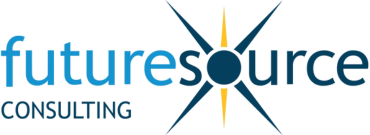Internal and External HDD markets drop by over 10%, SSD and DRAM show stability.
After a difficult first quarter, several companies have reported decreases in SSD and DRAM revenue – both year on year, and quarter on quarter – in their earnings reports. However, according to Futuresource’s quarterly channel trackers, the Q1 DRAM market saw a growth in sales volume of 1.6% from Q4 2022 – and the SSD market, one of 1.8%. Meanwhile, HDD sales saw a drop of 10.2% and 15.1% for internal and external HDD, respectively.
SSDs remain the most popular memory option, with Futuresource’s quarterly tracker showing 28.2 million in shipments in Q1, of which 91.8% are internal units. This is compared to 21.8 million DRAM shipments and 23.4 million HDD shipments, of which 64.3% are external drives.
Major companies reduce production to cope with dwindling demand
As economic difficulties have reduced spending on memory modules, an oversupply of stock has been generated, and companies facing this issue – including the world’s biggest chip manufacturer, Samsung – are taking steps to both move existing stock more quickly and reduce the manufacturing of additional products. This includes lowering prices and reducing factory output, with focus on higher-end products triumphing over continued production of legacy chips, such as DDR3.
Demand for high-capacity physical storage will increase with the return to economic stability
However, while spending on memory products has reduced, the need for them has not. The SSD, HDD and DRAM markets show promise for a long-term return to healthy growth.
The continuing rise of cloud storage suggests that the market for enterprise drives will continue to grow, as companies invest in growing their infrastructure in the face of increasing demand. This quarter, Futuresource reports an increase in mid and high-end enterprise SSD sales, of 3.1% and 11.0% respectively.
Additionally, the need for physical backups of data, as well as storage for growing file sizes – especially those of games – will continue to drive demand for client and gaming SSDs and DRAM modules. Futuresource find that, despite a 1.5% drop in sales of gaming SSDs this quarter, year on year shipments have seen a substantial 27% growth. With games now regularly running to over 25GB in size, and several major releases reaching – and surpassing – 100GB, increased PC storage becomes only more vital for even casual players.
Although leisure purchases may be delayed during the current economic downturn, there will certainly be some catch-up demand in future quarters, as players currently struggling against limited storage will make the decision to expand their memory.
With the price of storage decreasing, higher capacities are growing increasingly more accessible to the average consumer. This quarter, Futuresource has seen gains in sales of higher-end capacities, including a 23.8% gain in 1-2TB storage options and a 24.2% growth for models of 5TB or higher, while 100GB-1TB options see decreases in sales. This suggests that the trend of movement towards higher capacities continues, perhaps driven by the price drops in consequence of the oversupply.
Although, as shown by the 10.2% and 15.1% drop found by Futuresource’s quarterly tracker for internal and external drives respectively, HDD appears to be falling out of popularity. Instead, being replaced by SSD’s faster speeds and lower power consumption. HDDs offer benefits such as lower costs for higher capacities, and technological developments are reducing their power consumption rates and environmental impact. As a result, they continue as a viable option for use cases in which higher capacity is more important than fast speeds. Although sales are declining, they remain only slightly lower than those of SSD units.
Meanwhile, the US CHIPS Act offers incentives to companies to produce semiconductors in the United States. This has led to several companies – including Micron and Bosch – announcing their intention to construct new chip factories or invest in existing production. This should bolster the industry and prevent supply shortages, as in the pandemic.
Looking to the short-term future, following the regular annual trend of a weaker second quarter, early indications show no sign of breaking this trend for Q2 2023, with all categories expected to be down in unit sales from Q1, as market recovery is not expected until at least the end of 2023 – possibly later.
Latest Storage Media Insights
Latest Storage Media Insights
